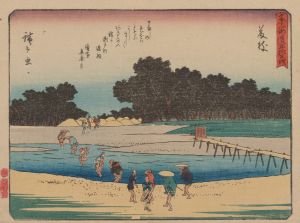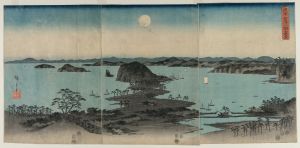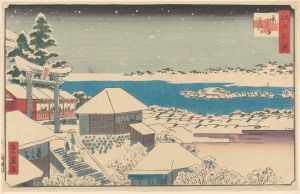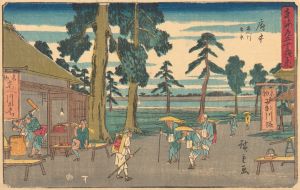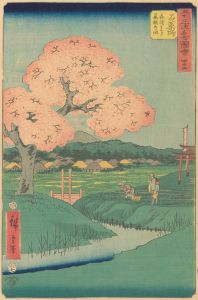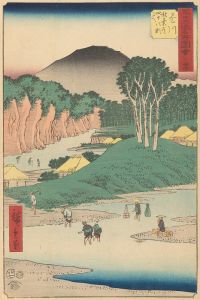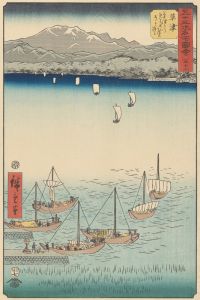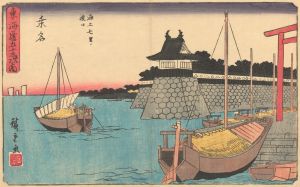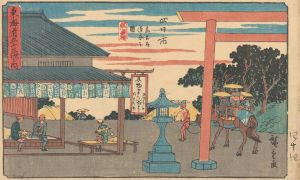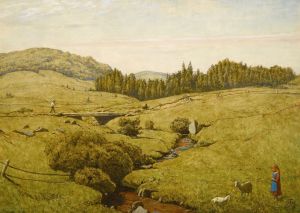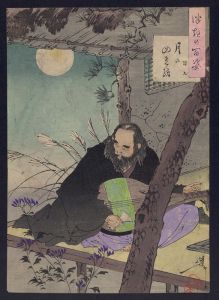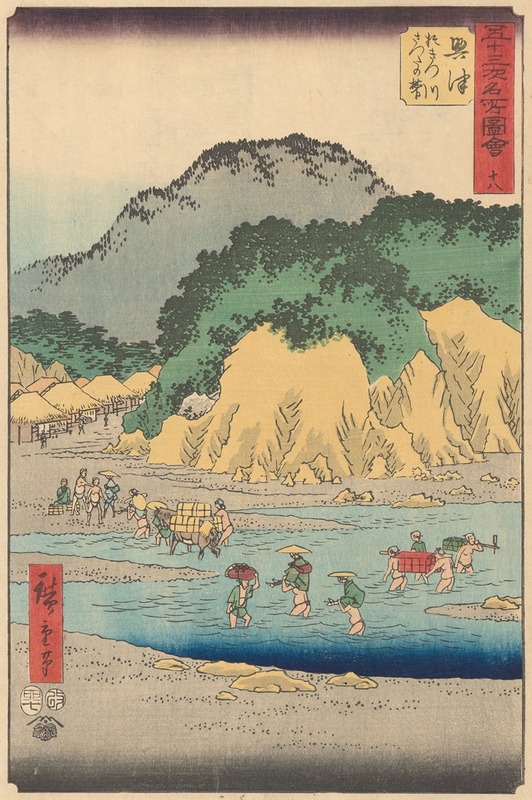
Okitsu
A hand-painted replica of Andō Hiroshige’s masterpiece Okitsu, meticulously crafted by professional artists to capture the true essence of the original. Each piece is created with museum-quality canvas and rare mineral pigments, carefully painted by experienced artists with delicate brushstrokes and rich, layered colors to perfectly recreate the texture of the original artwork. Unlike machine-printed reproductions, this hand-painted version brings the painting to life, infused with the artist’s emotions and skill in every stroke. Whether for personal collection or home decoration, it instantly elevates the artistic atmosphere of any space.
Andō Hiroshige's "Okitsu" is a woodblock print that forms part of his celebrated series The Fifty-three Stations of the Tōkaidō (Tōkaidō Gojūsan-tsugi), created during the Edo period in Japan. This series, first published in the 1830s, is one of Hiroshige's most famous works and depicts the fifty-three post stations along the Tōkaidō, the main travel route connecting Edo (modern-day Tokyo) and Kyoto. The prints capture the landscapes, daily life, and cultural essence of the time, blending realism with artistic interpretation.
"Okitsu" represents the 17th station on the Tōkaidō road, located in present-day Shizuoka Prefecture. The print portrays a scene along the Okitsu River, which travelers had to cross during their journey. In Hiroshige's depiction, two sumo wrestlers are being carried across the shallow river by porters. This image reflects a moment of humor and human interaction, as the wrestlers' large size contrasts with the smaller stature of the porters. The composition emphasizes the physical effort involved in transporting the travelers, while also showcasing the natural beauty of the river and its surroundings.
Hiroshige's use of color and perspective in "Okitsu" exemplifies his mastery of the ukiyo-e style. The print features soft gradients of blue and green to depict the river and landscape, while the figures are rendered with fine detail and dynamic poses. The scene captures both the challenges and the camaraderie of travel during the Edo period, offering a glimpse into the lives of people who traversed the Tōkaidō.
The Tōkaidō series was immensely popular during Hiroshige's lifetime and remains a cornerstone of Japanese art history. It reflects the growing interest in travel and tourism among the Edo-period populace, as well as the technical and artistic advancements of ukiyo-e printmaking. "Okitsu," like the other prints in the series, combines artistic beauty with documentary value, preserving a visual record of Japan's cultural and geographical landscape during the early 19th century.
Hiroshige's work, including "Okitsu," has had a lasting influence on both Japanese and Western art. His innovative compositions and use of color inspired later artists, including the Impressionists and Post-Impressionists in Europe. Today, "Okitsu" and the rest of The Fifty-three Stations of the Tōkaidō series are celebrated as masterpieces of Japanese woodblock printing, admired for their aesthetic qualities and historical significance.






